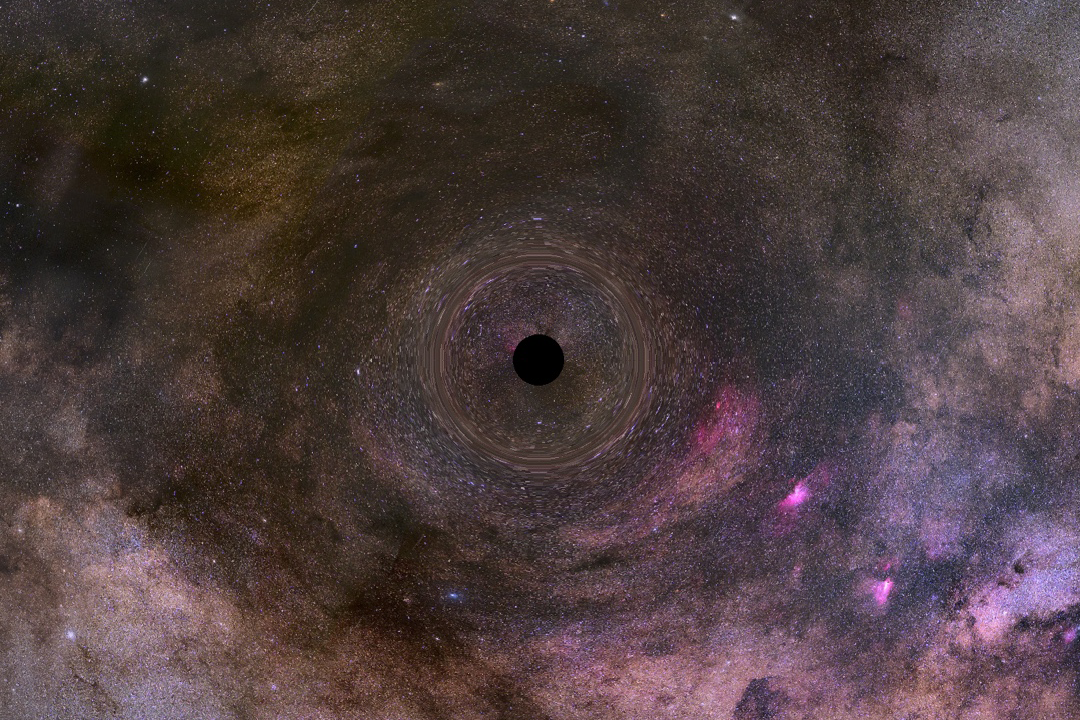Traveling through black holes ain’t like dusting crops, kid. If spaghettification doesn’t kill you, the singularity probably will.

A stellar-mass black hole may seem unassuming, but it will rip you to shreds much faster than a supermassive black hole. Credit: FECYT, IAC
Traveling into (or very near to) a black hole is the premise for a lot of fun science-fiction stories and films. But how far could you make it? Could you survive crossing the event horizon? And what awaits at the very center?
The answer to the first question depends on what kind of black hole you’re traveling into. Perhaps counterintuitively, the more massive a black hole is, the more gentle the inbound journey will be as you cross over the event horizon — the point of no return, inside of which not even light can escape.
The problem is tidal forces, which arise because an object’s gravitational pull becomes stronger as you approach it. If you’re being pulled in feet first, your feet will experience a stronger gravitational pull than your head. The net result is that your feet and head will want to fly apart and stretch your body into a thin string — a process that scientists call spaghettification.
For a stellar-mass black hole — the ordinary, humdrum black holes formed when a massive star explodes — the event horizon is located relatively close in. This means that tidal forces will be quite strong. But for a supermassive black hole that weighs millions of times the mass of the Sun, the event horizon will be so far away that tidal forces are quite gentle.
But what happens when you reach the center of a black hole is another matter. Most theorists think that a singularity lies at the center, which would crush you into a pinpoint — and that would end your trip real quick, wouldn’t it?
But that doesn’t mean we can’t enjoy a good sci-fi, black hole story. The fascinating physics of space and time around black holes and the way they warp reality make for plenty of material.
Follow Astronomy magazine, the world’s best-selling astronomy magazine:
🌎 Website: https://astronomy.com
📖 Subscribe: http://subscribe.astronomy.com
📘 Facebook: https://www.facebook.com/AstronomyMagazine
📸 Instagram: https://instagram.com/astronomy.magazine
🐦 Twitter: https://twitter.com/AstronomyMag
Shop Celestron telescopes:
🔭 Website: https://celestron.com
Follow Dave Eicher:
📘 Facebook: https://www.facebook.com/davidjohneicher
📸 Instagram: https://instagram.com/eicher.david
🐦 Twitter: https://twitter.com/deicherstar

